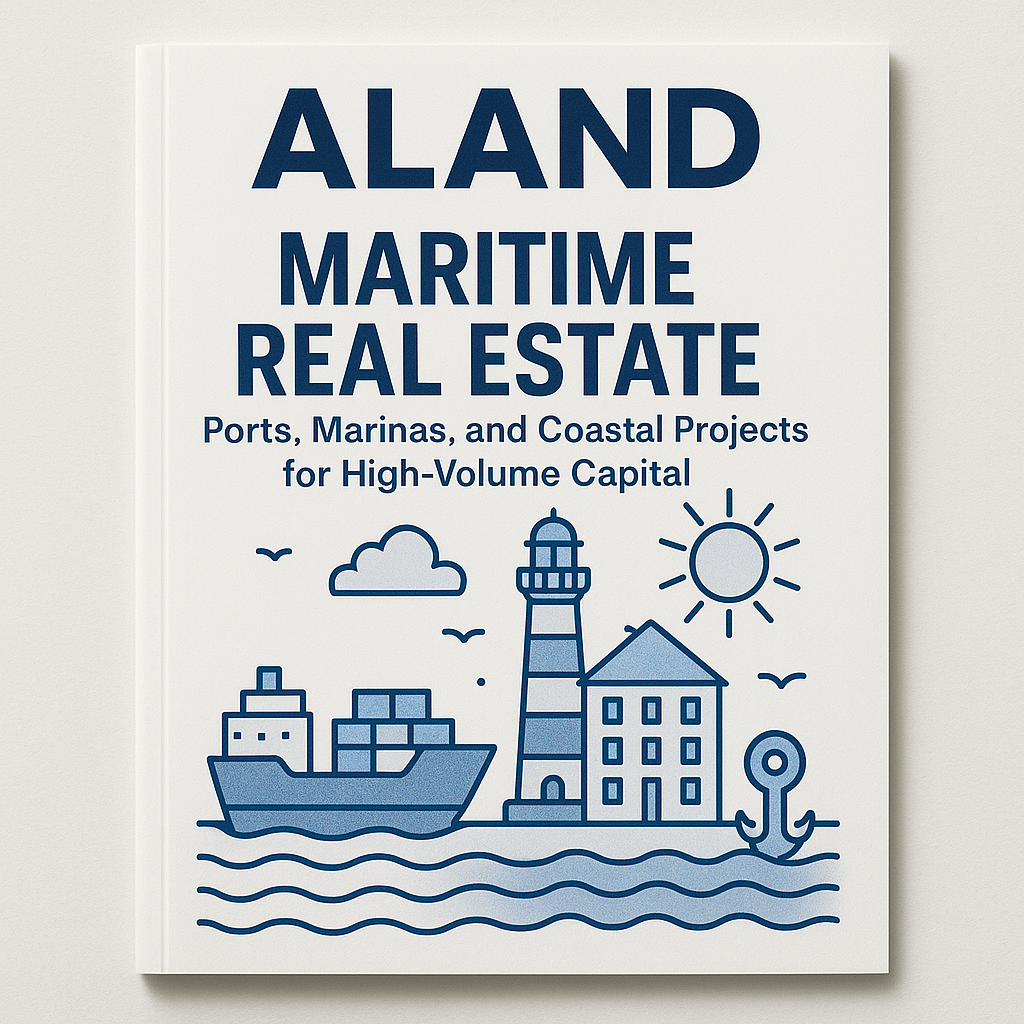Maritime Real Estate: Ports, Marinas, and Coastal Projects for High-Volume Capital
- Published Date: 17th Aug, 2025
-
4.9★ ★ ★ ★ ★(96)

Ports, marinas, and coastal developments are emerging as high-capacity gateways for global capital flows. These projects not only represent strategic infrastructure but also anchor new ecosystems of trade, logistics, tourism, and real estate. For institutional investors and family offices, maritime real estate offers a rare combination of resilience, scale, and diversification in a volatile global market.
Dr. Pooyan Ghamari, Swiss Economist and Founder of the ALand Platform, emphasizes that maritime real estate is no longer confined to traditional port operations. Instead, it has become a nexus of economic transformation, bridging real estate development with cross-border trade, tourism, and sustainability initiatives. By embedding technology and eco-conscious design, ports and marinas are becoming assets that generate long-term returns while enhancing national competitiveness.
Strategic Drivers of Maritime Real Estate Investment
- Geopolitical Trade RoutesShifts in global alliances and regional blocs (NAFTA, EU, ASEAN, GCC) increase the value of strategic maritime hubs. Investors seeking geopolitical hedges are turning to port and marina projects that serve as gateways for diversified trade.
- Tourism and Lifestyle AssetsLuxury marinas and waterfront developments blend real estate with lifestyle experiences. These hybrid projects attract high-net-worth individuals and yacht owners while driving spillover growth in hospitality and retail.
- Sustainability and ESG CapitalMaritime projects integrating renewable energy, green logistics, and coastal protection measures attract ESG-focused institutional investors. According to insights from the ALand Blog, corporations aligning real estate with environmental responsibility enjoy higher consumer and investor trust.
Cause-Related Marketing in Maritime Real Estate
Ports and marinas that adopt cause-related campaigns—such as ocean conservation or coastal community development—enhance their global branding. Dr. Ghamari underscores that this isn’t philanthropy but a calculated economic strategy. Consumer-facing corporations connected to these projects leverage their involvement for stronger brand narratives, improved customer loyalty, and favorable ESG scoring.
Digital tools from ALand ABC further enable corporations to track impact, tokenize maritime assets, and scale cause-related branding campaigns with measurable ROI.
Market Innovation and Tokenization
Tokenization introduces liquidity to what has traditionally been an illiquid asset class. By leveraging blockchain-driven ownership models, investors can participate in fractional ownership of marinas or coastal logistics hubs. This democratizes access to capital-intensive assets while enabling faster cross-border investments.
Similar to how EE Gold is transforming gold markets by merging stability with blockchain liquidity, tokenized maritime real estate blends physical infrastructure with digital flexibility.
Practical Insights for Corporations and Investors
-
Evaluate Trade Corridors: Prioritize projects aligned with expanding trade routes or emerging regional alliances.
-
Integrate ESG from Day One: Position coastal projects as sustainability leaders to attract green capital.
-
Adopt Hybrid Revenue Models: Combine port logistics income with tourism and hospitality streams.
-
Measure Branding ROI: Use consumer sentiment analytics and ESG ratings to quantify the value of cause-related campaigns.
Readers can explore The ALand Times for industry updates, ALand Blog for strategic investment insights, and EE Gold for digital-asset strategies shaping modern capital flows.

